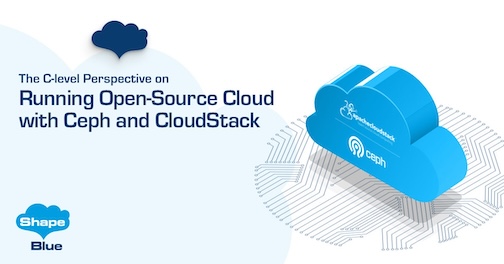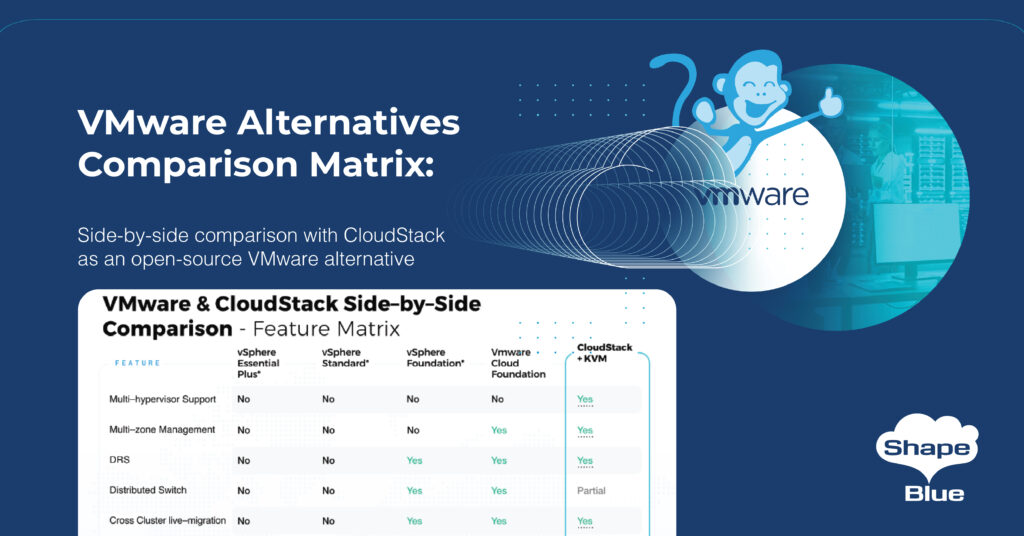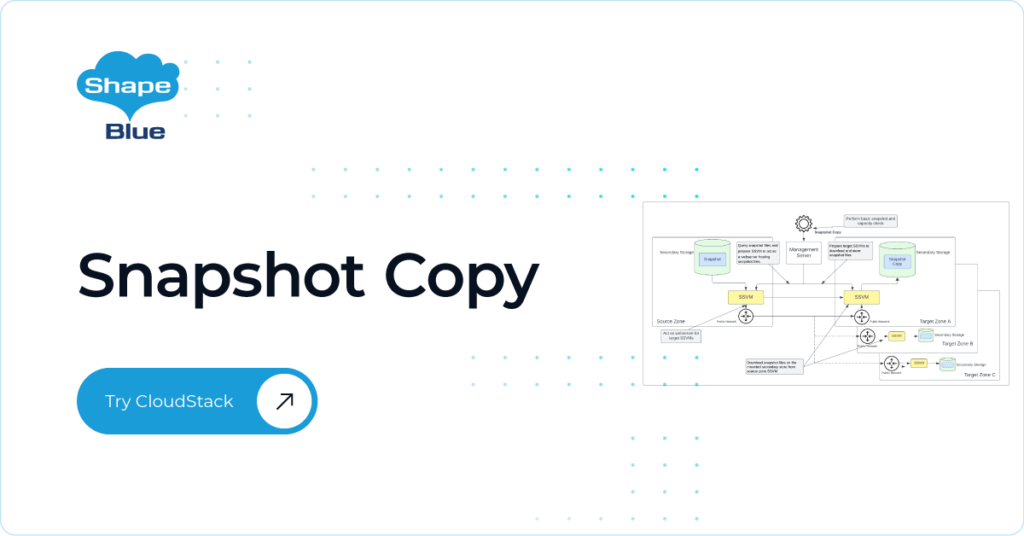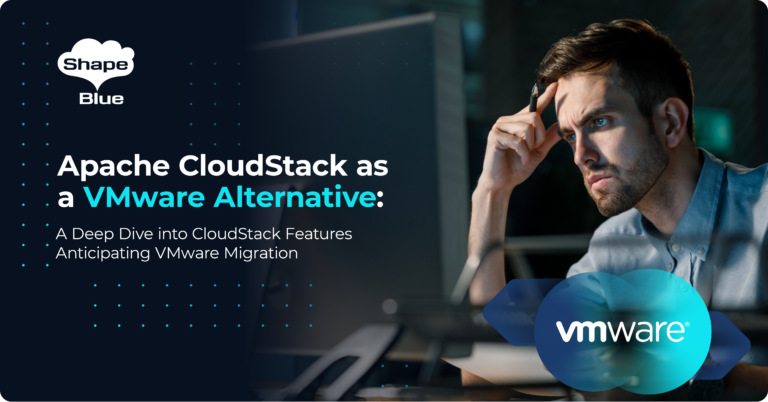The cloud and hosting market has experienced a complete transformation during the last decade. While previously there was a range of mid-sized local cloud providers dominating the market in each country, many providers were acquired by VC’s, larger providers, telcos and third-party enterprises in the last ten years. It is getting harder and harder for individual cloud providers to survive in the battle with competition and the hyperscalers.
However, these companies can offer unique and tailor-made solutions, which can better match their customers’ needs. The technology stack behind these services is one of their most significant advantages. Having better, faster and more cost-efficient technology in place helps cloud and hosting providers deliver greater value to their customers and diversify from competitors. This article will focus on an open-source technology stack, which has proven to be a turnkey solution for hosters and CSPs – CloudStack and Ceph.
The Challenges
The new market dynamics is bringing new challenges for hosting and cloud providers. While previously focused entirely on developing new solutions, implementing new technologies like CDN, DDoS protection, and monitoring systems, companies are now required to deliver 100% uptime, unique professional services, Ops expertise, and better customer care. Among the most common challenges are:
100% Uptime Expectation – Uptime is becoming way more relevant than ever. Every customer is expecting 100% uptime, and nowadays, it is mandatory to offer such quality for even the lowest hosting plans you offer. This expectation is a challenge for the software and hardware you use, and it is way more challenging to run your environment 24/7.
How to Compete with Hyperscalers – How to position in the hyperscaler-driven world? Just offering cloud services and having customer loyalty is not good enough anymore. You have to innovate and provide something that the hyperscalers are not offering to keep your market share.
Dealing with Infrastructure Evolution – Nowadays, you are buying high-end machines, which are more powerful and reliable. In the last decade, the hardware became way more reliable and affordable, but you need to think smart about getting the maximum out of the investment in it. Many companies follow the standard practice to amortise hardware for 3 to 5 years, thus needing to buy the new generation hardware. But is this the right approach to keep infrastructure costs low?
Price/Performance Ratio – The market is getting more demanding for high performance and low latency. Often this is connected with buying large chunks of powerful hardware. These investments usually result in unutilised capacity or high costs per vCPU and RAM unit.
Read more about how to price your IaaS in the right way.
The Advantages of CSPs
Despite all of the challenges, being a local cloud service provider has many benefits and competitive advantages. Customers tend to choose local providers because of the option to rely on better support and quality of service. The ease of communication with the vendor is a huge advantage as customers can get in touch in case of technical issues or а need for specific cloud architecture.
Other factors to consider are data sovereignty and regulations, particularly in regulated industries such as healthcare. All these, combined with a range of professional and managed services cloud service providers can offer, make them quite competitive and often a better alternative to hyperscalers.
The Benefits of Open-Source Technologies for Cloud Service Providers
At ShapeBlue we believe that open-source technologies are the way to go for cloud service providers. The reason for this is that open-source projects deliver longevity, a stable and community-driven roadmap, and reliability that the technology you deploy today, will be here in the long-term. When you provide IaaS or cloud services to tens of thousands of customers, you need to ensure your margin is stable over time, and open-source technologies can help you to do it. Unlike commercial vendors, who chase revenue targets and have individual business concepts, open-source is driven by its users and their demand.
Some of the open-source projects are run by commercial companies and not governed by a community.
When it comes to a cloud orchestration solution, the top open-source choices are OpenStack, Apache CloudStack and OpenNebula. At ShapeBlue, we believe that CloudStack is the turnkey solution for service providers because of its ease of implementation, low costs of operations, reliability and proven capabilities to deliver on its promise.
 “We chose CloudStack because it is a stable platform from a technology and licensing perspective.
“We chose CloudStack because it is a stable platform from a technology and licensing perspective.
At PC Extreme, we know that we can rely on CloudStack in the long term because of the stability ASF provides. In this way, we focus on our customers and not on complexity with technology.”, says Wido den Hollander, CTO at PC Extreme.
The company is one of the largest cloud providers in the Netherlands and manages the infrastructure for multiple web hosting companies in Europe. They are among the most experienced users of CloudStack/Ceph combination.
Ceph, CloudStack and KVM – The Golden Standard for CSPs
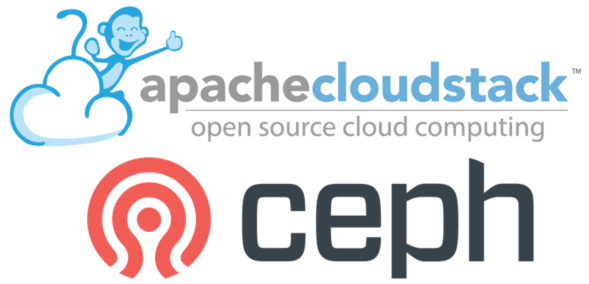 One of the difficulties when buying proprietary solutions is that vendors often dictate what 3rd party software and hardware you must choose. On the cloud orchestration side, this means specific integrations which are supported and requirements to the stack. Things get even more complicated on the storage side – many storage vendors become hyped and then either get bought by a bigger vendor or do not survive in the long term. You need to purchase specific storage bundles and do not have the flexibility to scale as you grow. Or if you have it, you pay much more per TB when you have a low capacity than if you buy hundreds of TBs. With open-source, you have the freedom to get the building blocks you need so that you can grow quickly. You are not locked into specific hardware, and the storage grows with you while you scale your cloud.
One of the difficulties when buying proprietary solutions is that vendors often dictate what 3rd party software and hardware you must choose. On the cloud orchestration side, this means specific integrations which are supported and requirements to the stack. Things get even more complicated on the storage side – many storage vendors become hyped and then either get bought by a bigger vendor or do not survive in the long term. You need to purchase specific storage bundles and do not have the flexibility to scale as you grow. Or if you have it, you pay much more per TB when you have a low capacity than if you buy hundreds of TBs. With open-source, you have the freedom to get the building blocks you need so that you can grow quickly. You are not locked into specific hardware, and the storage grows with you while you scale your cloud.
Discover more on how to choose the right cloud management platform.
Ceph, CloudStack and KVM have proven to be the right stack for cloud service providers, which want to have the complete freedom to grow their infrastructure with their business and manage their stack in the way they want. Ceph is an open-source, software-defined storage solution, which can easily scale from a few to hundreds of nodes.
“With open-source, I have the freedom to buy the building blocks I need to grow my storage behind my cloud. Тechnology is great, but you also need to think about the profitability. You need to have a margin so that you can be a healthy company.” said Wido den Hollander, CTO at PC Extreme.
The combination of Ceph and CloudStack allows you to keep your Capex down, and you buy the bare minimum of technology needed. You save costs on licensing, as you are deploying an open-source stack and using commodity hardware across all data centers. It delivers excellent flexibility and scalability in terms of technology and financials.
 “We see the world from the CloudStack perspective. CloudStack is storage agnostic and can be used with the storage platform you want, have the skills to manage and fits best your environment. CloudStack and Ceph are relatively easy to manage technologies, which also means a lower cost of ownership. You can run hundreds of hypervisors and several PBs of storage which can be managed only by 3-4 people.”, says Giles Sirett, CEO of ShapeBlue.
“We see the world from the CloudStack perspective. CloudStack is storage agnostic and can be used with the storage platform you want, have the skills to manage and fits best your environment. CloudStack and Ceph are relatively easy to manage technologies, which also means a lower cost of ownership. You can run hundreds of hypervisors and several PBs of storage which can be managed only by 3-4 people.”, says Giles Sirett, CEO of ShapeBlue.
Read more about CloudStack’s integration with Ceph here.
Removing the Vendor Lock-in and Ensuring Flexibility
Usually, with commercial vendors, you need to follow specific guidelines on what hardware to buy, how to use it, how to build your stack or on what increments to scale it. This makes you locked into the vendor way of using technology and limits your agility. This will almost certainly decrease the profit margins. A typical example is a hardware, where some machines are supported for a specific time (usually 5 years) and then your company is pushed to move to the new generation of hardware. All this is resulting in new investments, spendings, migrations and costs.
With the combination of CloudStack and Ceph, you get a significant financial advantagе and eliminate vendor dependencies. They are both designed to be vendor-agnostic. CloudStack supports a whole range of hypervisors and hardware, making it perfect for cloud and managed service providers.
In conclusion, at ShapeBlue, we believe that open-source technology can solve some of the toughest challenges for CSPs: improving profitability, ensuring scalability and reliability and decreasing the time spent managing the cloud environment. The combination of CloudStack and Ceph is easy to deploy, easy to operate and a proven turnkey solution used by some of the largest public clouds. It provides stability in the long term, and you can run it without worries about licensing changes or where the product roadmap will go in future.
Ivet Petrova is the Marketing Director of ShapeBlue. She is responsible for strengthening ShapeBlue’s global brand and market awareness of ShapeBlue’s services. Specifically, Ivet’s team is responsible for brand, advertising, content and digital marketing, social media, and media relations.
